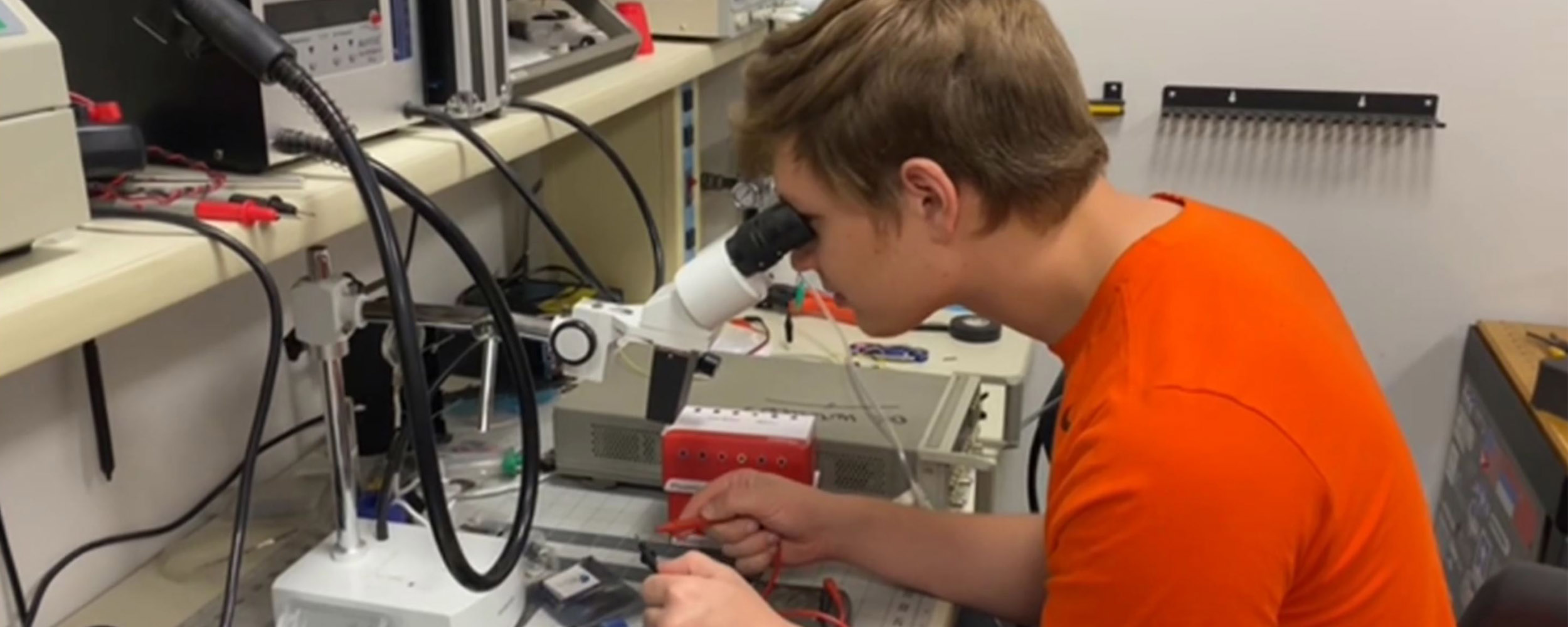
Two Space Cowboys undergraduate teams selected for the NASA Micro-g NExT Challenge
Friday, December 17, 2021
Media Contact: Kristi Wheeler | Marketing and Communications manager | 405-744-5831 | kristi.wheeler@okstate.edu
Two teams of undergraduate students in the College of Engineering, Architecture and Technology were selected to participate in next year’s NASA Micro-g NExT challenge.
Team PICTOR will compete with its idea of a lunar samples size and location calibration marker. Team LIBRA will compete with its idea of a lunar reusable surface anchoring device. The students on Team PICTOR are Leo Fagge, Kason Clark, Nathan Fant and Colby Wilson. Landon Dowrs, Omar Abouzahr, Tom Hosty and John Pippin comprise Team LIBRA.
Micro-g Neutral Buoyancy Experiment Design Teams (Micro-g NExT), challenges undergraduates to design, build and test a device that focuses on a current challenge being faced in space exploration. This year’s challenges pertain to Artemis, NASA’s lunar exploration program. The three challenges were: Lunar Surface EVA Operations — EVA Sample Size Location Calibration Marker; Lunar Surface EVA Operations — EVA Sample Bag & Dispenser; and Lunar Surface EVA Operations — Lunar Reusable Surface Anchoring Device.
Watch NASA's Video Announcement
Team PICTOR focused on challenge No. 1, Lunar Surface EVA Operations – EVA Sample Size Location Calibration Marker.
The objective of their project was to design a sample marker for astronauts to place on the lunar surface. This sample marker will then provide real-time data about the sample to scientists on earth, allowing them to study it and decide if a sample needs to be collected. The marker includes calibration tools such as measurement scale, color bar and grayscale. Students had to account for the various surfaces the marker would be placed on as well as ease of use for astronauts.
“Getting the chance to work with NASA as an undergraduate and knowing we would have a small part to play in going back to the moon was the main reason most of us joined this challenge,” said Leo Fagge, mechanical and aerospace engineering freshman. “This was the first time participating in this challenge for everyone on my team, so we all approached the problem with very open minds. We still have a lot of work to do in order to get ready to go to the Johnson Space Center, but all of us are excited to have gotten this far.”
“The opportunity to design and test an actual mechanism that will possibly be used during the Artemis mission is so exciting,” said Kason Clark, a mechanical and aerospace engineering senior. “What I have really enjoyed about the project so far is the new connections I have made with younger Oklahoma State students. I feel that our team collaborates well together and we have all become good friends.”
Team LIBRA focused on challenge No. 3, Lunar Surface EVA Operations – Lunar Reusable Surface Anchoring Device.
The objective of their project was to design a reusable anchoring device that deploys quickly, without power and holds force on various objects in space. The mechanism will help secure astronauts or robots when they need a quick, temporary anchor to pick up rock samples, hold up a structure or secure an underwater vehicle.
“This is my second year in the competition,” said Omar Abouzahr, mechanical and aerospace engineering junior. “I have always been intrigued by exploration, especially in space, so I felt that I could be involved with a facet of it through the NASA Micro-g NExT challenges while still in school. Additionally, it is a great opportunity to work with a team of fellow students from brainstorming to testing. I am excited to be part of the lunar surface anchor challenge. I feel that it is the most difficult challenge, and we came up with a creative solution that I think NASA seems to be interested in.”
“This year’s competition was particularly fierce and having two OSU teams selected demonstrates the quality of our interdisciplinary undergraduate students,” said Dr. Jamey Jacob, director of the Unmanned Systems Research Institute. “This is a great opportunity for the Space Cowboys team members to interact with NASA and solve some of their most challenging Artemis problems.”
Both team’s projects will be tested by professional divers in the NASA Johnson Space Center Neutral Buoyancy Laboratory early next summer.
Story By: Haley Bradley | haley.bradley@okstate.edu
